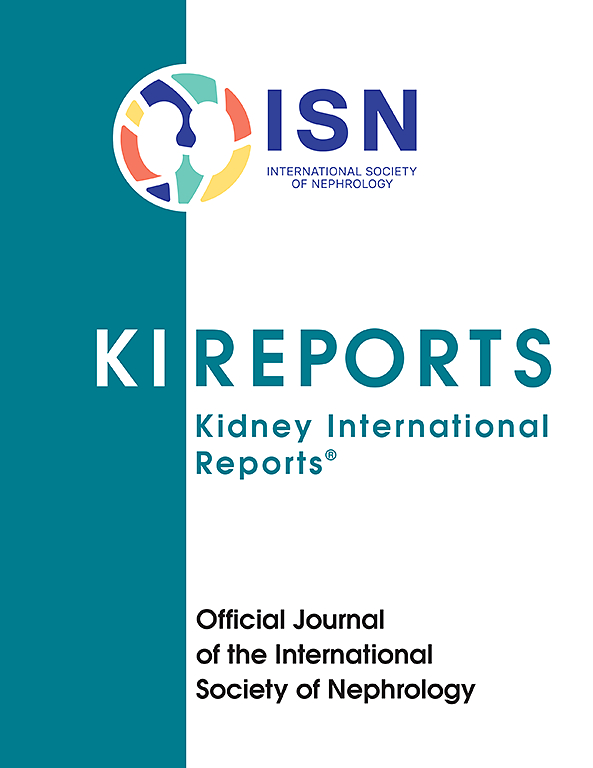ADPKD的心血管并发症
IF 5.7
2区 医学
Q1 UROLOGY & NEPHROLOGY
引用次数: 0
摘要
常染色体显性多囊肾病(ADPKD)主要由PKD1或PKD2基因突变引起,是世界上最常见的遗传性肾病之一,并与包括心血管疾病在内的显著肾外表现相关。在患有ADPKD的患者中,心血管疾病是死亡的主要原因,并与合并症的高负担相关。心血管表现包括高血压,可导致左心室肥厚(LVH)和舒张功能障碍,以及瓣膜异常、主动脉瘤和心包积液(PCE)。心血管表现可以早期作为ADPKD表现的一部分出现,也可以由于慢性肾脏疾病(CKD)的进展而晚出现。早期发现心血管症状可以在更好地管理这些患者中发挥关键作用。ADPKD患者的高血压可能在早期就开始,并由多囊素(PC)功能障碍、细胞内信号中断和肾素-血管紧张素-醛固酮系统(RAAS)激活的复杂相互作用驱动,这可能导致血管结构改变和内皮功能受损。瓣膜受累表现为年龄分布的双峰模式,早期表现出现在较年轻的患者中,可能与遗传因素有关,后期并发症作为CKD进展的一部分出现。本综述探讨了ADPKD的心血管并发症,强调早期发现的必要性,并简要概述了定制的管理方法,以改善这一高危人群的预后。本文章由计算机程序翻译,如有差异,请以英文原文为准。
Cardiovascular Complications in ADPKD
Autosomal dominant polycystic kidney disease (ADPKD), primarily caused by mutations in the PKD1 or PKD2 gene, is among the most common hereditary kidney diseases worldwide and is associated with significant extrarenal manifestations, including cardiovascular disease. In patients with ADPKD, cardiovascular disease is the major cause of mortality and is associated with a high burden of comorbidities. Cardiovascular manifestations include hypertension, which may lead to left ventricular hypertrophy (LVH) and diastolic dysfunction, as well as valvular abnormalities, aortic aneurysm, and pericardial effusion (PCE). The cardiovascular manifestations can present early as part of the ADPKD manifestation or later because of chronic kidney disease (CKD) progression. Early detection of cardiovascular manifestations can play a pivotal role in better management of these patients. Hypertension in ADPKD might start at an early age and is driven by a complex interplay of polycystin (PC) dysfunction, intracellular signaling disruptions, and activation of the renin-angiotensin-aldosterone system (RAAS), which can contribute to vascular structural changes and impaired endothelial function. Valvular involvement exhibits a bimodal pattern of age distribution, with early manifestations occurring in younger patients likely linked to genetic factors and later complications emerging as part of CKD progression. This review explores cardiovascular complications in ADPKD, emphasizing the need for early detection, and briefly provides an overview of tailored management approaches to improve outcomes in this high-risk population.
求助全文
通过发布文献求助,成功后即可免费获取论文全文。
去求助
来源期刊

Kidney International Reports
Medicine-Nephrology
CiteScore
7.70
自引率
3.30%
发文量
1578
审稿时长
8 weeks
期刊介绍:
Kidney International Reports, an official journal of the International Society of Nephrology, is a peer-reviewed, open access journal devoted to the publication of leading research and developments related to kidney disease. With the primary aim of contributing to improved care of patients with kidney disease, the journal will publish original clinical and select translational articles and educational content related to the pathogenesis, evaluation and management of acute and chronic kidney disease, end stage renal disease (including transplantation), acid-base, fluid and electrolyte disturbances and hypertension. Of particular interest are submissions related to clinical trials, epidemiology, systematic reviews (including meta-analyses) and outcomes research. The journal will also provide a platform for wider dissemination of national and regional guidelines as well as consensus meeting reports.
 求助内容:
求助内容: 应助结果提醒方式:
应助结果提醒方式:


